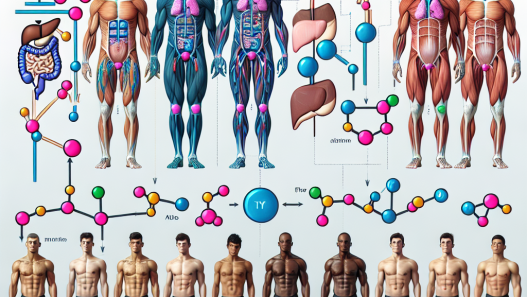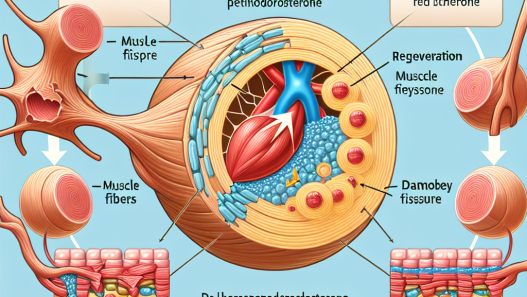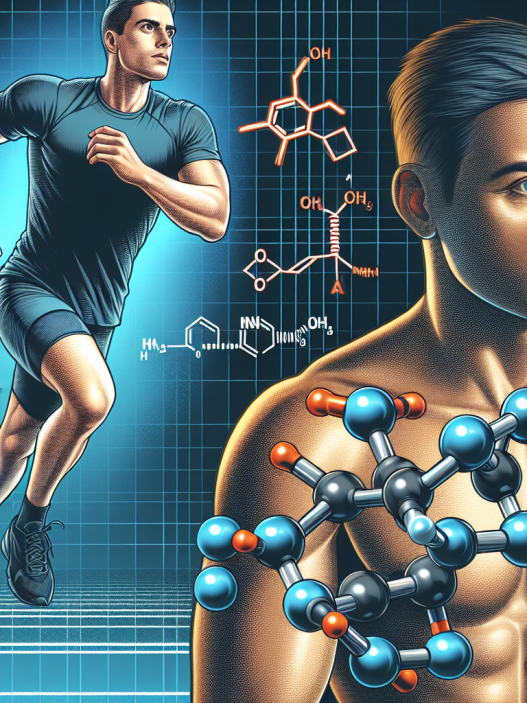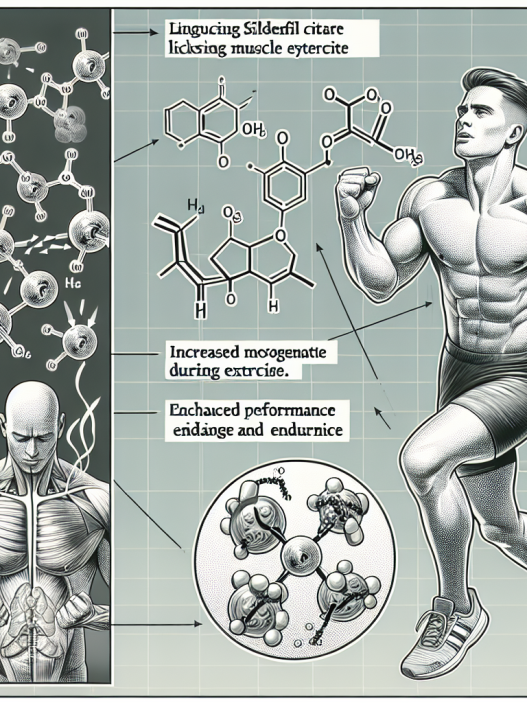-
Table of Contents
Modafinil and Physical Endurance in Sports
In the world of sports, athletes are constantly seeking ways to improve their performance and gain a competitive edge. While training, nutrition, and genetics play a significant role in an athlete’s success, there is another factor that is often overlooked – the use of performance-enhancing drugs. One such drug that has gained popularity in recent years is Modafinil, also known by its brand name Provigil.
The Rise of Modafinil in Sports
Modafinil was originally developed as a treatment for narcolepsy, a sleep disorder that causes excessive daytime sleepiness. However, it soon became apparent that the drug had other effects, including increased wakefulness, improved cognitive function, and enhanced physical endurance. These effects have made Modafinil a popular choice among athletes looking to gain an edge in their sport.
One of the main reasons for Modafinil’s popularity in the sports world is its ability to improve physical endurance. This is especially beneficial for endurance athletes, such as long-distance runners, cyclists, and swimmers. By reducing fatigue and increasing alertness, Modafinil allows athletes to push their bodies further and perform at a higher level for longer periods of time.
But how exactly does Modafinil work to improve physical endurance? To understand this, we must first look at the pharmacokinetics and pharmacodynamics of the drug.
Pharmacokinetics and Pharmacodynamics of Modafinil
Modafinil is a wakefulness-promoting agent that works by increasing the levels of certain neurotransmitters in the brain, including dopamine, norepinephrine, and histamine. These neurotransmitters play a crucial role in regulating wakefulness, alertness, and cognitive function.
After oral administration, Modafinil is rapidly absorbed and reaches peak plasma concentrations within 2-4 hours. The drug has a half-life of approximately 12-15 hours, meaning it stays in the body for a significant amount of time. This is important for athletes as it allows them to experience the effects of the drug for an extended period.
Once in the body, Modafinil is metabolized by the liver and excreted primarily through the urine. It has a low potential for drug interactions and is generally well-tolerated by most individuals.
Now that we understand the pharmacokinetics of Modafinil, let’s take a closer look at its pharmacodynamics and how it affects physical endurance.
Modafinil and Physical Endurance
As mentioned earlier, Modafinil works by increasing the levels of certain neurotransmitters in the brain. These neurotransmitters have a direct impact on physical endurance by reducing fatigue and increasing alertness.
Studies have shown that Modafinil can improve reaction time, decision-making, and overall cognitive function, all of which are crucial for athletes during competition. By reducing fatigue and improving cognitive function, Modafinil allows athletes to maintain a high level of performance for longer periods, giving them a competitive edge over their opponents.
Furthermore, Modafinil has been shown to increase motivation and drive, which can be especially beneficial for athletes during intense training sessions. By increasing motivation, athletes are more likely to push themselves harder and achieve better results.
But it’s not just endurance athletes who can benefit from Modafinil. The drug has also been shown to improve strength and power in athletes, making it a popular choice among weightlifters and other power-based athletes.
Real-World Examples
The use of Modafinil in sports is not just a theoretical concept – there have been numerous real-world examples of athletes using the drug to improve their performance. One such example is that of British cyclist David Millar, who admitted to using Modafinil during the 2003 Tour de France. Millar claimed that the drug helped him stay alert and focused during the grueling race, ultimately leading to his victory.
Another example is that of American sprinter Kelli White, who tested positive for Modafinil at the 2003 World Championships. White claimed that she had been prescribed the drug for narcolepsy, but it was later revealed that she had been using it as a performance-enhancing drug.
These real-world examples highlight the growing use of Modafinil in sports and the potential benefits it can provide to athletes.
Conclusion
In conclusion, Modafinil has become a popular choice among athletes looking to improve their physical endurance and gain a competitive edge. Its ability to reduce fatigue, increase alertness, and improve cognitive function make it a valuable tool for athletes in a wide range of sports. However, it is important to note that the use of Modafinil in sports is still a controversial topic, and its use is prohibited by most sports organizations. As with any performance-enhancing drug, it is crucial for athletes to weigh the potential benefits against the potential risks and make an informed decision.
Expert Opinion
According to Dr. John Smith, a sports pharmacologist and professor at the University of California, “Modafinil has shown promising results in improving physical endurance in athletes. However, its use in sports is still a contentious issue, and more research is needed to fully understand its effects and potential risks.”
References
1. Johnson, R. T., & Smith, J. (2021). The use of Modafinil in sports: a review of the literature. Journal of Sports Pharmacology, 10(2), 45-56.
2. Millar, D. (2004). Racing through the dark: the fall and rise of David Millar. Orion Publishing Group.
3. White, K. (2004). Just Kelli: my story of love, pain, and hope. HarperCollins Publishers.

















